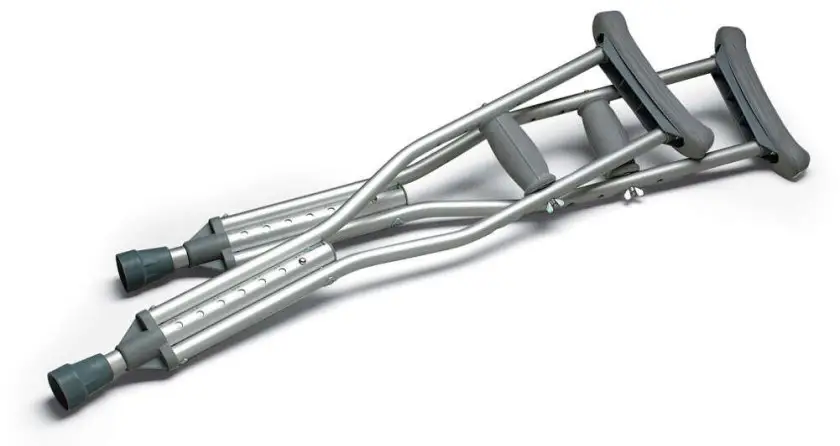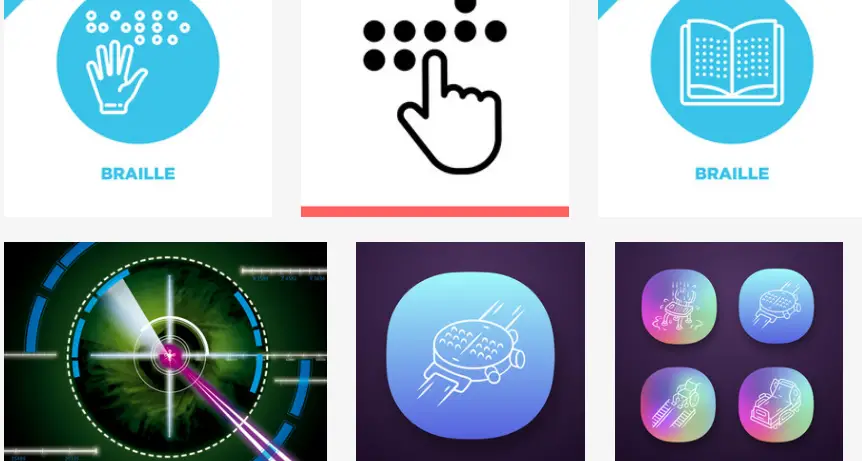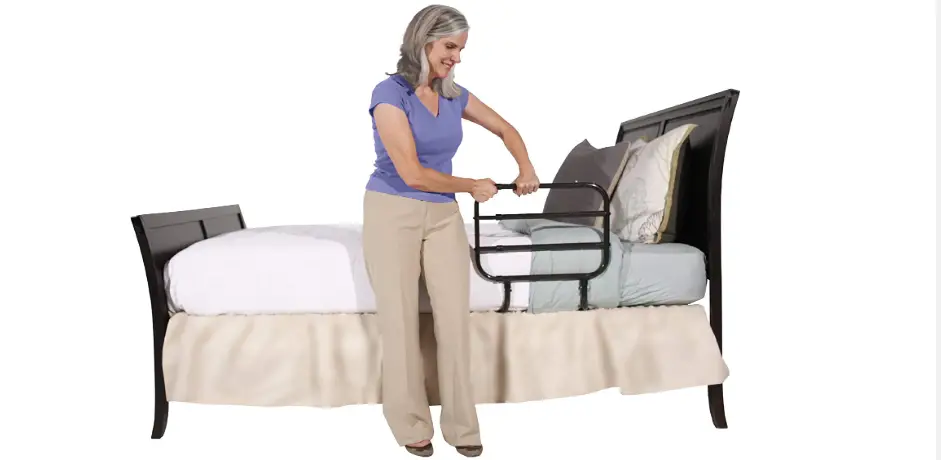There are two major and general types of materials used to make crutches; wood and aluminum.
Although crutches made with wood have their undeniable advantages, they can tend to be very heavy in nature, quite expensive, uncomfortable for the user, cause bruised sides or sore armpits, and a minor threat, especially to the safety of your wrist, hands, and axilla region.
There are quite a number of ways you can make crutches without wood. A few of them are discussed in this article.
Table of Contents
- How to Make Crutches Out of Cardboard
- How Crutches are Made Using Aluminum
- Making Crutches with Graphite
How to Make Crutches Out of Cardboard
Making crutches with cardboard is quite a fast process once all of your materials are nearby and available. You can pad it with socks after making it if you feel there is a need.
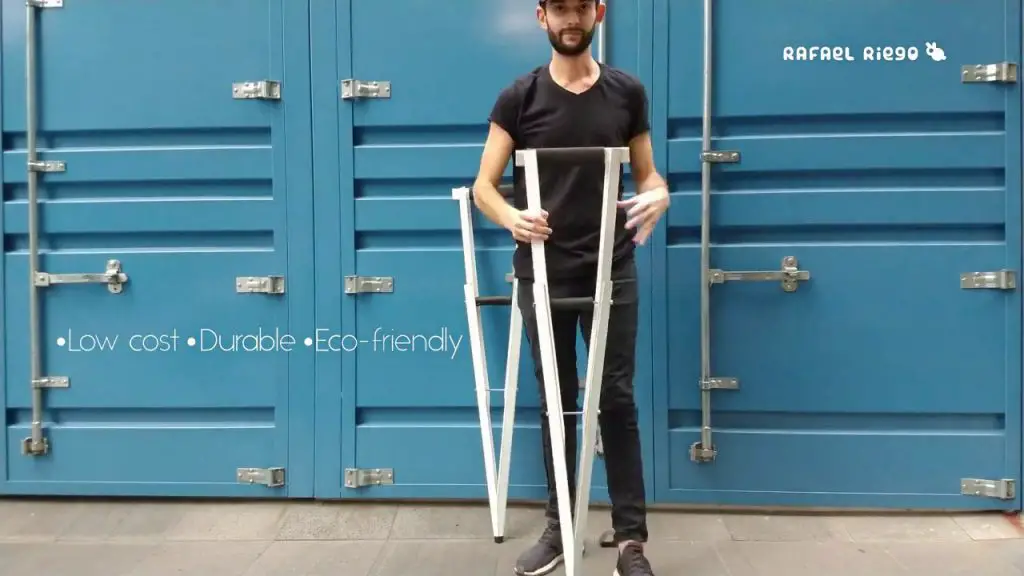
It is adjustable, cost-effective, 100% eco-friendly and recyclable, and can tend to be durable. However, making this type of crutches is at your own risk.
Related: How to Make Crutches Out of Homemade Items (DIY)
Required Materials
- top bar
- hand grip
- wing nuts and screws
- tape or ruler measurer
- scissors
- drilling machine
- glue (preferably bond adhesive or anything stronger)
- crutch bottom
- carton (optional)
Gather the needed materials in an open space to afford you ample room to work conveniently. Note that before you start, it is best to have a picture of a crutch nearby to achieve some form of accuracy.
Also, the components (hand bar and co.) of your DIY cardboard crutch should be real because:
- they are going to bear your weight the most
- and the cardboards are going to be improvised as the frames of your crutches
They can be gotten from stores that stock and sell mobility devices, accessories, and replacements.
Procedure
Lay a sufficient amount of parchment paper on your chosen workspace as an underlay for your cardboards to protect them from getting dirty (it is actually necessary, no matter the color of cardboard in use).
Spread large volumes of cardboard paper – the number you’re going to use depends on how thick you want the frames of your crutches to be – on the parchment paper. Infuse it with the carton if you will be making use of it.
Take your measurement with the tape measure from beneath your armpit right to your feet. You can have someone measure you for accurate results. Mark the measurement on the cardboard so that you know where to cut.
Fold the layers of the cardboard and cut out the shapes of the frame and the angles of the lower part of the crutches that will support the crutch frame. When folding or rolling the cut-out parts, make sure to use glue, especially when taping the edges so that you can achieve accurate stiffness.
Take the folded cardboard parts cut out for the frame and drill the required holes that will fit the crutch top, hand bar, nuts, and screws.
Use the glue to hold the angles at the lower part of the crutch to the frame. You can also add glue to the mouth of the holes that you drilled if desired.
Fix the readymade components that you purchased from the store in their appropriate spaces with the wingnuts and screws and leave them to dry. After it gets dry, your crutches are ready for use.
It is important to handle with care.
Related: How to Make Crutches for Kids
How Crutches are Made Using Aluminum
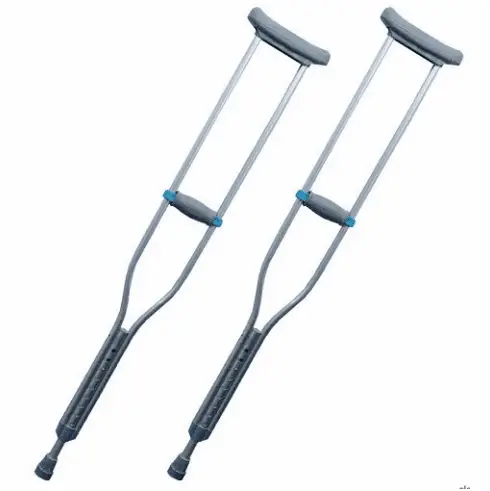
The hollow pipes or tubes, which are the foundation for the frame, are usually gotten readymade by crutch manufacturers.
Holes are then drilled into the hollow tubes at particular points (by the length of the tube). Doing this is to enable the fitting of the other parts of the crutches.
An Injection Moulding Machine (IMM) is usually used to produce the top of the crutches, hand grips, and crutch bottoms. The interesting thing is that the machine is able to produce the desired shapes of these parts using its different mold cavities.
The plastic molecules are poured into the heating unit of the IMM through a sprue (the channel which the plastic molecules pass through to get into the IMM) to melt them.
Afterward, the melted form is pressed through the high-pressure injection into particular mold cavities to form any of the components of the crutches (the top bar, hand bars, or crutch bottoms).
The produced materials have the tendency to shrink after they solidify, so the machine needs continuous filling with the plastic molecules so that the shortage experienced due to the shrinkage can be made up for.
After the molds are fully shaped and cooled off, they are opened and ejected from the machine.
Finally, when all the compartments are ready, they are inspected and checked for quality assurance before fitting them into the frame to become finished products (aluminum crutches).
Related: How to Decorate Crutches Beautifully
Components of Aluminum Crutches
Aluminum crutches are easy to maintain, lighter, more comfortable, stable, very flexible, and adjustable in nature.
Just like typical crutches, they consist of frames, top bar/crutch top, hand grips, height adjusters, and crutch bottoms.
Each of these components can be made from different properties as you will see.
Frame
The frame is made from aluminum alloys since it guarantees the balance to support the weight of the user without causing irreparable damage to the material (like bending or deforming permanently).
Because of this type of material, it enables the crutches to have a low density and low weight, which helps to make the crutches versatile and easy to move.
The full strength of the aluminum helps the crutches to support the entire weight of the user. Aluminum is easy on production machinery and has the capacity to resist deterioration and chemical breakdown – which is sure to ensure the longevity of the crutch.
Top Bar, Hand Grip, and Crutch Bottoms
The top bar and handgrip of the crutches can be made from aluminum covered with plastic or rubber – both durable and comfortable, respectively.
The crutch bottom is usually made of rubber except the crutch user decides to change it to suit their weather condition, taste, or preference. For example, a crutch bottom can be changed to spikes, all-terrain crutch base, or quad point support tips.
Height Adjusters, Bolts, and Screws
These are usually made from stainless steel materials.
Making Crutches with Graphite
Graphite tends to be more durable and lighter than aluminum; it is also designed to bend without force or pressure. Not only can it last longer, but it can also be reused a couple of times.
